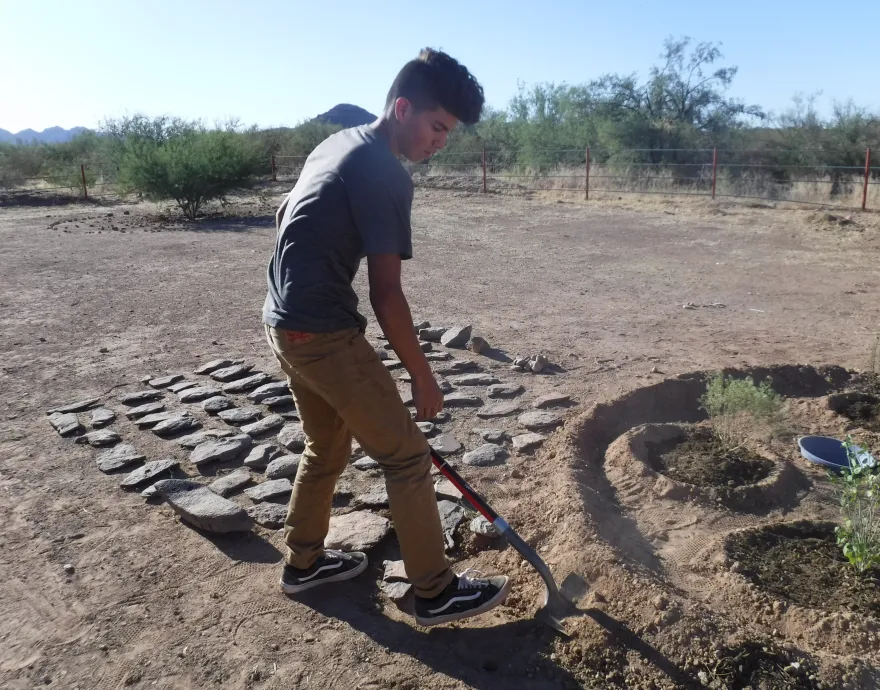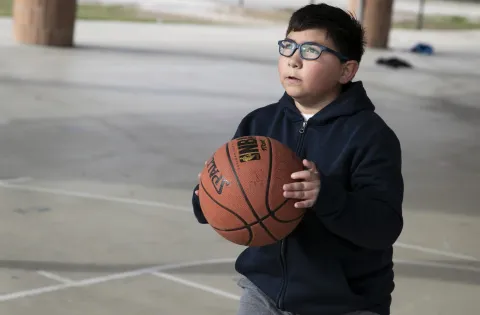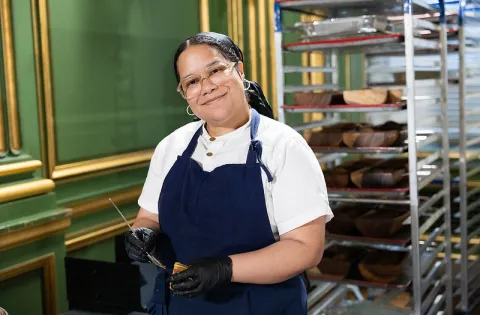The Native American Advancement Foundation (NAAF) formed in 2011 to promote holistic well-being for members of the Tohono O’odham Nation. NAAF runs a variety of programs related to education, health and wellness, food sustainability and environment, and language and cultural knowledge.
Collaborating closely with Arizona Food Bank Network staff members Alexander Meyer and Tristan Kitch, NAAF is developing the GuVo District Youth Food Security Project. With generous support from national anti-hunger organization No Kid Hungry, this project will support the use of traditional O’odham agricultural practices to sustain food access in GuVo District.
"We believe in supporting organizations intimately embedded within local tribes and their respective communities to actualize sustainable food sovereignty; NAAF is a picture-perfect example of such an organization," shared Alexander Meyer, program manager at Arizona Food Bank Network about the work of this organization.
Ruth's Oidag

Oidag is the Tohono O’odham word for “garden” and our oidag is named for a beloved elder, Ruth Ortega who recently passed.
NAAF built this outdoor learning classroom in partnership with No Kid Hungry for their flagship After School Program in February 2020. The program provides enrichment learning in STEM, health and wellness, and Tohono O’odham language and culture.
During the pandemic, Ruth’s Oidag grew into a beautiful space for students to learn Sonoran Desert ecology, biology, traditional Tohono O’odham agriculture and irrigation. They were able to try new healthy recipes, practice O’odham language and listen to stories from elders.
A Learning Space
NAAF educators cultivated Ruth’s Oidag following the CDC’s guidelines and hosted regular and special activities, including: traditional mud brick-making, family plantings and arid irrigation trainings. They harvested crops like hiv [h]ai (sunflower), huñ (corn) and gepï and miloñ (melons) while learning the O’odham language.
The community response has been incredible. Amazing volunteers worked hard through desert heat and monsoons to tend Ruth’s Oidag. GuVo District mothers were honored in May with a garden harvest, a birdhouse gift and a homemade prickly pear stew to take home for dinner.
The NAAF team used fresh produce from Ruth’s Oidag in the daily meal delivery service to each child’s home in GuVo District. We have a special Ruth’s Oidag salad of dinosaur kale, romaine and red leaf lettuces, celery and carrots.
Adriana Fitts, NAAF program coordinator, added educational packages to the deliveries. These included STEM and nutritional information, as well as Tohono O’odham language and culture. For example, a package included planting and cooking ideas, as well the symbolism of four kernels and the four wind directions.
A Garden to Cultivate Traditions
Jordan Evans, CEO of NAAF, described the cultural importance of the garden for her community.
"The garden symbolizes that our heritage is sacred and our traditions are alive," she said.
For example, the Tohono O’odham new year is celebrated in late June with the blooming and subsequent harvest of ha:san cactus (saguaro). Harvesting the bahidaj (saguaro fruit) is a joyous and important tradition. NAAF led multiple family sessions in the bahidaj harvest as a way for young people to learn and practice Tohono O’odham himdag (lifeways).
In Ruth’s Oidag, young people are learning critical knowledge and skills, and celebrating their identity as Tohono O’odham people. Traditional farming is interwoven with language and culture, personal and collective wellness in the Sonoran desert environment.
Organizations like NAAF are not only connecting kids to the meals the need to thrive, they are also creating spaces to teach and cultivate cultural traditions. We are grateful to NAAF for the work they do and for sharing their story.


